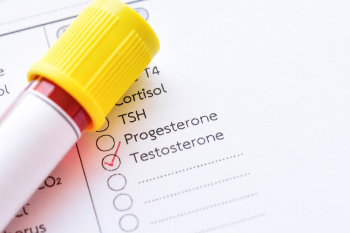Peyronie’s Disease: Testosterone Levels Not Linked to Extent of Penis Curve

For men with Peyronie’s disease, the degree of penis curvature doesn’t appear to be affected by low testosterone levels, according to a July 2019 study in the Journal of Sexual Medicine.
A bent penis is one of the main characteristics of Peyronie’s disease. The curve is caused by plaques that form on the tunica albuginea, the tissue that surrounds two spongy chambers that fill with blood during an erection. The plaques make the penis less flexible, and the penis bends, making intercourse a challenge.
Previous research has suggested that the severity of the curve might be linked to a man’s testosterone levels. In the current study, researchers further investigated this idea.
They recruited 184 men with Peyronie’s disease to participate. The men’s average age was 54 years, and they had had Peyronie’s disease for an average of 18 months. About three-quarters of them were still able to have intercourse.
The men’s testosterone levels were measured. Because testosterone production fluctuates throughout the day, all measurements were taken before noon for consistency. The researchers analyzed the measurements in several ways. For example, they calculated each man’s free testosterone and total testosterone. (Click here for more details on these designations.)
On average, the men’s total testosterone levels were 425 ng/dL. According to guidelines set forth by the American Urological Association and the Endocrine Society, measurements below 300 ng/dL are considered low.
The researchers also assessed the degree of curvature for each man’s penis. The average curve was 34 degrees.
After analyzing the data, the researchers determined that “there is no relationship between low testosterone levels and the magnitude of [Peyronie’s disease]-associated penile deformity.”
It should be noted that this study focused on the degree of curvature, not the presence of Peyronie’s disease itself. It’s still unknown whether low testosterone is be linked to Peyronie’s disease in general, and future studies may focus on such a connection.
The authors also pointed out that while their study subjects had a noticeable curve to the penis, not all Peyronie’s disease patients do. Some men’s penises have indentations or take on an hourglass shape. Since the latter forms are difficult to measure, this study focused only on men whose penises curved.
Resources
The Journal of Sexual Medicine
Mulhall, John P., MD, MSc, FECSM, FACS, et al.
“Testosterone Levels Are Not Associated With Magnitude of Deformity in Men With Peyronie’s Disease”
(Full-text. Published online: July 11, 2019)
https://www.jsm.jsexmed.org/article/S1743-6095(19)31232-9/fulltext
You may also be interested in...
Other Popular Articles

What Is the Average Penis Size?
If you have ever wondered how your penis compares to others in terms of size, you are not alone. Many men are curious to know how their penises stack up compared to the average. Unfortunately, general curiosity can sometimes give way to full-on obsession and anxiety about penis size. This can be an unhealthy and often unnecessary fixation, especially because most men who think their penises are too small have perfectly normal-sized penises.

What Is Jelqing, and Does It Actually Work?
The term “jelqing” refers to a set of penis stretching exercises that some believe can make the penis bigger. Although the practice has gained attention and popularity in blogs and internet forums in recent years, there is no scientific evidence that it is an effective way to permanently increase the size of one’s penis. In fact, in some cases, jelqing may actually cause damage to the penis, so it is a good idea to get all the facts before setting off to try it.

What Is Sensate Focus and How Does It Work?
Sensate focus is a technique used to improve intimacy and communication between partners around sex, reduce sexual performance anxiety, and shift away from ingrained, goal-oriented sexual patterns that may not be serving a couple.

Can Sex Reduce Menstrual Cramps?
The SMSNA periodically receives and publishes ‘guest editorials.’ The current article was submitted by Mia Barnes, a freelance writer and researcher who specializes in women's health, wellness, and healthy living. She is the Founder and Editor-in-Chief of Body+Mind Magazine.
Having sex while you experience menstrual cramps is healthy and can provide significant benefits. While it might not be the first activity that comes to mind when your PMS or period cramping begins, many people enjoy sex to reduce menstrual cramps, experience increased pleasure and benefit from other advantages. Learn more about having sex while menstrual cramps are happening and how it can help your body.

How Long Does It Take the Average Man to Ejaculate?
On average, it takes a man between 5 to 7 minutes to orgasm and ejaculate during sexual intercourse.

The Effect of Regular Aerobic Exercise on Erectile Function
Erectile dysfunction (ED) is the inability to achieve or maintain an erection sufficient for satisfactory sexual activity. As men get older, their erectile functioning may naturally decline due to changes in testosterone levels, cardiovascular functioning, and the potential development of other chronic medical conditions that become more common with age.
You are prohibited from using or uploading content you accessed through this website into external applications, bots, software, or websites, including those using artificial intelligence technologies and infrastructure, including deep learning, machine learning and large language models and generative AI.

